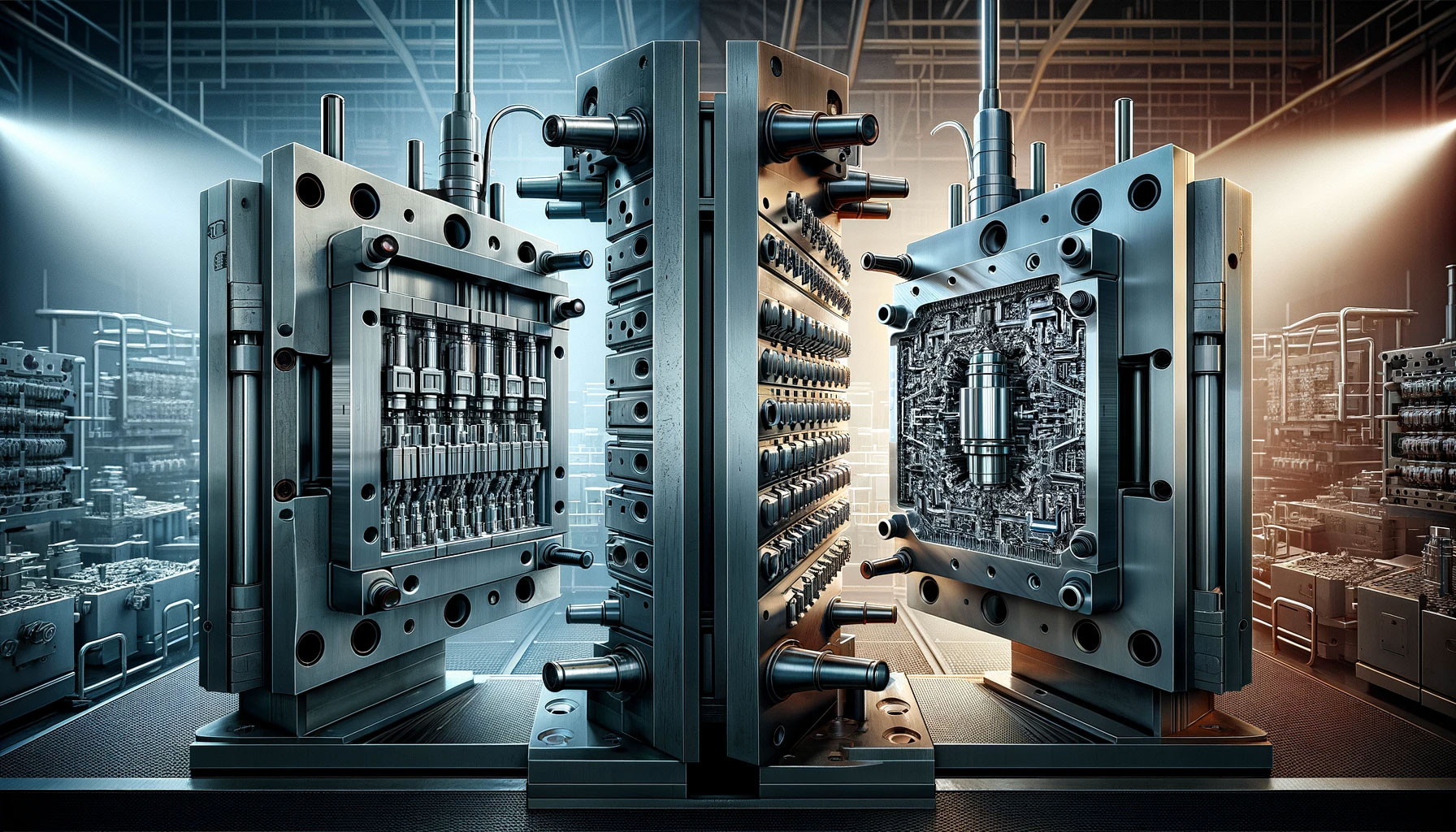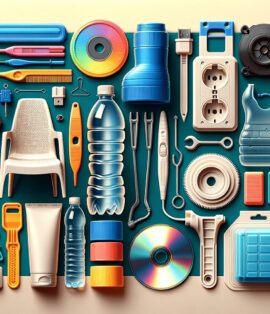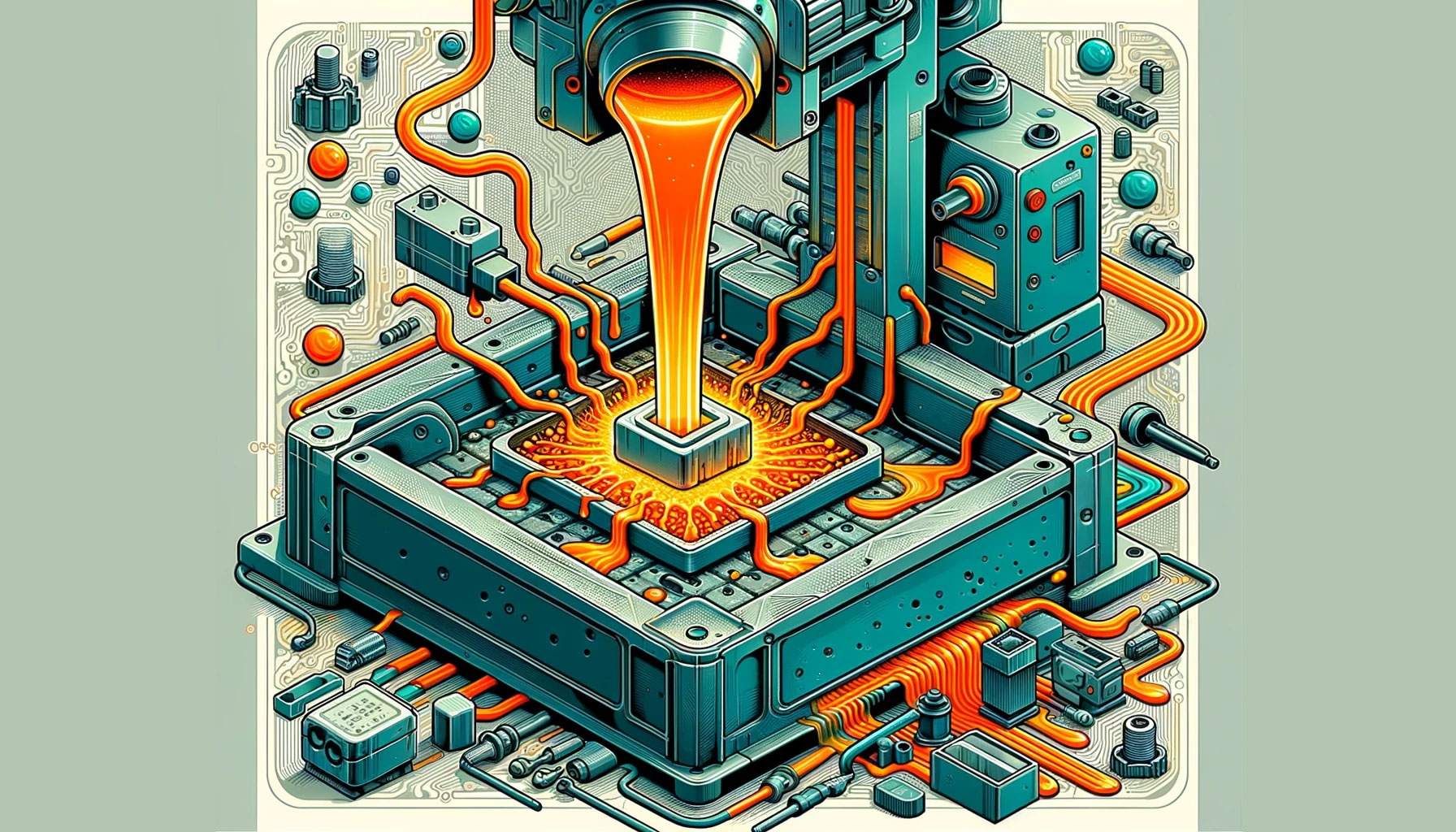
Single-Cavity vs. Multi-Cavity Injection Molding: Optimizing for Efficiency and Cost
In the realm of injection molding, the debate between using single-cavity and multi-cavity molds is a pivotal one for manufacturers looking to balance cost with efficiency. Understanding the nuances of each mold type is crucial for European and U.S. customers seeking specialized tool-making and mold production services.
This decision is pivotal, as it influences production efficiency, cost, and quality. Single-cavity molds are straightforward, featuring just one cavity for producing a single component per cycle, making them an excellent option for low-volume projects due to their lower initial investment and simpler design. They are less complex, require lower tonnage machinery, and afford operators more control.
Conversely, multi-cavity molds can manufacture several components simultaneously, leading to increased productivity, reduced lead times, and the ability to meet high-volume demands efficiently. While the upfront costs for multi-cavity molds are higher due to their complexity and the need for more robust machinery, they offer economies of scale that significantly lower the per-part production cost.
When choosing between single and multi-cavity molds, several key parameters must be evaluated: production or lead times, volume, manufacturing costs, and part price. For high-volume projects, multi-cavity molds are generally preferable despite their greater initial expense because they yield a better cost breakdown over time. On the other hand, for smaller production volumes, the investment in multi-cavity molds may not be justifiable.
The right mold type for an injection molding project will depend on the specific requirements and applications; there is no universal solution. Both single and multi-cavity molds have their merits, and the optimal choice hinges on striking a balance between cost, time, and quality.
Understanding the Basics: Single-Cavity Molds
Single-cavity molds are the cornerstone of injection molding, where one cavity molds a single component per cycle. This approach is synonymous with precision and is particularly advantageous when manufacturing large parts or when the highest quality is non-negotiable. Explore our quality certification to understand our commitment to excellence in every product.
When to Choose Single-Cavity Molding
Selecting single-cavity molds aligns with specific production needs. It is the go-to option for low-volume production or when the part design is too large or complex for multi-cavity processes. Dive deeper into the design considerations on our Design & Engineering page.
The Scale of Production: Multi-Cavity Molds
For higher volume requirements, multi-cavity molds are the industry standard. These molds contain multiple cavities of the same part, allowing for simultaneous production, which significantly upscales output and reduces cost per part. Learn more about how this efficiency can be a cost-effective solution for automotive injection molding.
Advantages of Multi-Cavity Molding
Multi-cavity molds are not just about volume. They also represent a strategic choice for consistent quality across parts, which is critical in industries where uniformity is key. Our plastic molding expertise ensures high-quality production irrespective of the mold type used.
Evaluating the Cost Implications
One cannot discuss single-cavity versus multi-cavity molds without addressing the cost factor. While the upfront investment in multi-cavity molds is higher, the reduced cost per unit can lead to significant savings over time. For an in-depth analysis, refer to our article on how to estimate injection molding costs.
Technical Comparison: Precision vs. Productivity
At the technical core, the choice between single-cavity and multi-cavity molds is a battle of precision against productivity. While single-cavity molds offer unparalleled precision, multi-cavity molds boast unbeatable productivity. Our CNC Machining capabilities ensure the highest accuracy in mold creation, whether it’s for a single prototype or high-volume production runs.
Material Considerations
Material selection plays a pivotal role in determining the appropriate mold type. Certain materials that are sensitive to heat or have a high shrink rate may not be suitable for multi-cavity molds due to the risk of warping or defects. Consult our comprehensive Injection Molding Material Guide to make informed decisions.
Lead Time and Complexity
The lead time for single-cavity molds is typically shorter given the less complex nature of the mold design. This can be critical for projects with tight deadlines or for companies that need to get their product to market quickly. For more insights on rapid production, visit our Rapid Prototyping service page.
Strategic Decision-Making: Assessing Your Needs
Choosing between single-cavity and multi-cavity molds should be a strategic decision based on your production needs, part complexity, and budget constraints. It’s not just about the mold, but about the overarching goals of your project. Our services are tailored to guide you through this critical decision-making process.
Case Studies: Success Stories
Analyzing case studies where single-cavity and multi-cavity molds have been successfully implemented can provide valuable insights. From intricate medical devices to robust automotive components, each scenario showcases the adaptability of injection molding techniques. Discover more about our success stories in the Tech Blog.
Future-Proofing Your Molds
Future-proofing is another aspect to consider. Will your product evolve in a way that might require changes to the mold design? Single-cavity molds offer greater flexibility for modifications, while multi-cavity molds are a commitment to the current design. Navigate to our About page to learn how we help clients plan for the future with adaptable mold solutions.
Maintenance and Longevity of Molds
Maintenance is a critical factor in the lifespan and performance of injection molds. Single-cavity molds can be easier to maintain due to their simpler design, but multi-cavity molds, while more complex, are designed for longevity under high-volume production conditions. Our commitment to quality certification ensures that all molds are built to last, irrespective of their type.
Regular Maintenance Schedules
Adhering to regular maintenance schedules is essential to prevent unscheduled downtime, which can be more costly in the case of multi-cavity molds due to their higher output rates. Our services include comprehensive maintenance plans to keep your molds in optimal condition.
Repair and Refurbishment
When molds eventually wear down, the ease of repair and refurbishment comes into play. Single-cavity molds may be less costly to repair, while multi-cavity molds require more intricate work. Our contact page provides direct access to our support team for any maintenance inquiries.
The Environmental Perspective
The environmental impact of manufacturing is a growing concern. Single-cavity molds may produce less waste in the case of errors or adjustments, while multi-cavity molds, by virtue of higher production rates, can reduce the overall carbon footprint per part. We take our environmental responsibility seriously, as detailed on our About Us page.
Energy Consumption and Efficiency
Energy consumption is another environmental factor. Multi-cavity molds can be more energy-efficient on a per-part basis, which is crucial for sustainable manufacturing practices. Our injection molding services are designed with energy efficiency in mind.
Recycling and Material Reuse
Both single-cavity and multi-cavity molds can be used with recyclable materials, promoting material reuse and reducing environmental impact. Information on our use of sustainable materials can be found on our Plastic Molding page.
Conclusion: The Right Choice for Your Project
Deciding between single-cavity and multi-cavity injection molds is a decision that has profound implications for your project’s success. It requires careful consideration of your production needs, part complexity, environmental impact, and budget. At LK Moulds, we leverage our expertise in Design & Engineering, CNC Machining, and injection molding to ensure you make the right choice for your unique requirements.
Our team is here to answer your questions
Let’s talk about your Project
Relatetd Post



Recent Posts
- CNC Machining: The Key Advantages for Efficient and Precise Rapid Prototyping
- Prototyping: 3D Printing vs. CNC Machining
- Automotive Plastic Injection Molding: A Cost-Effective Solution
- Injection Molding: The Ultimate Manufacturing & Design Guide
- What is CNC Machining? A Comprehensive Overview of Precision Manufacturing




Comments are closed